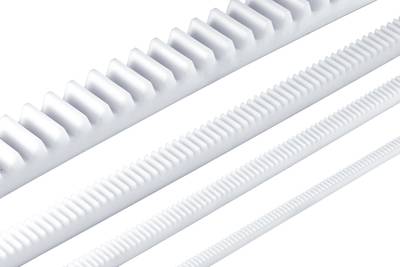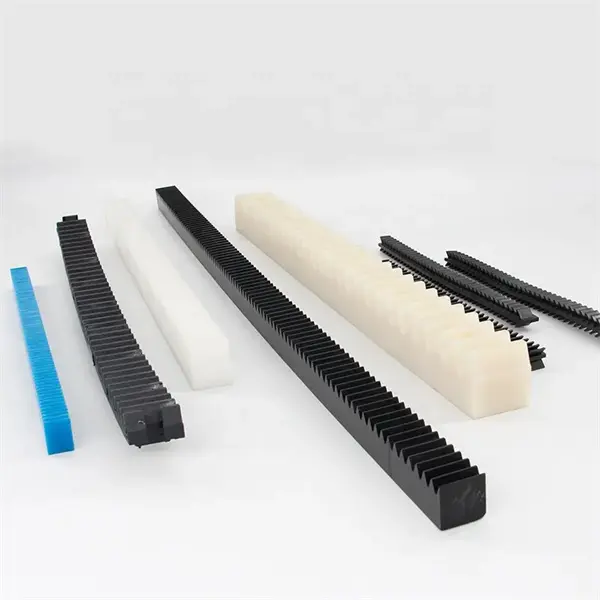Product Description
Product Description
|
Products |
Gear |
|||
|
Module |
M0.3-M10 |
|||
|
Precision grade |
DIN5, DIN6, DIN7, DIN8, DIN10 |
|||
|
Pressure angle: |
14.5 degree, 15 degree, 20 degree |
|||
|
Material |
C45 steel, ,304SS, 316SS, 20CrMo,40Cr, brass, nylon, POM, and so on |
|||
|
Heat treatment |
Hardening and Tempering High Frequency Quenching Carburization etc |
|||
|
Surface treatment |
Blacking, Polishing, Anodization, Chrome Plating, Zinc Plating, Nickel Plating |
|||
|
Application |
Precision cutting machines.Lathes machine |
|||
|
Machining process: |
CNC engine latheCNC milling machine |
|||
Detailed Photos
Test
Inspection steps before delivery: Use GO/Nogo inspect hole—Use micrometer check dimensions—Next use stiffness detection system inspect hardness–Finally use CMM inspect precision
Packaging & Shipping
Company Profile
ZheJiang Haorongshengye Electrical Equipment Co., Ltd.
1. Was founded in 2008
2. Our Principle:
“Credibility Supremacy, and Customer First”
3. Our Promise:
“High quality products, and Excellent Service”
4. Our Value:
“Being Honesty, Doing the Best, and Long-lasting Development”
5. Our Aim:
“Develop to be a leader in the power transmission parts industry in the world”
|
6.Our services: |
1).Competitive price |
|||
|
2).High quality products |
||||
|
3).OEM service or can customized according to your drawings |
||||
|
4).Reply your inquiry in 24 hours |
||||
|
5).Professional technical team 24 hours online service |
||||
|
6).Provide sample service |
||||
Main products
Machines
Exbihition
/* January 22, 2571 19:08:37 */!function(){function s(e,r){var a,o={};try{e&&e.split(“,”).forEach(function(e,t){e&&(a=e.match(/(.*?):(.*)$/))&&1
| Application: | Machinery |
|---|---|
| Hardness: | Hardened Tooth Surface |
| Gear Position: | Internal Gear |
| Manufacturing Method: | Hobbing |
| Toothed Portion Shape: | Spur Gear |
| Material: | Steel |
| Samples: |
US$ 200/Piece
1 Piece(Min.Order) | |
|---|
| Customization: |
Available
| Customized Request |
|---|

Can rack and pinion systems be customized for specific machinery?
Yes, rack and pinion systems can be customized to suit specific machinery requirements. These systems offer flexibility in design and can be tailored to meet the unique needs of different applications and machinery. Here’s a detailed explanation of the customization possibilities for rack and pinion systems:
1. Size and Dimension: Rack and pinion systems can be customized in terms of size and dimension to fit the available space and requirements of the machinery. The length and width of the rack, as well as the diameter and number of teeth on the pinion, can be adjusted to ensure proper integration and optimal performance within the given constraints.
2. Load Capacity: Depending on the machinery’s load requirements, the rack and pinion system can be customized to handle specific load capacities. This involves selecting the appropriate tooth profile, material, and sizing of the rack and pinion to ensure they can withstand and transmit the required forces without compromising performance or safety.
3. Speed and Accuracy: Rack and pinion systems can be customized to achieve specific speed and accuracy requirements. By selecting the appropriate gear ratio, tooth pitch, and tooth profile, the system can be tailored to deliver the desired linear speed and positional accuracy needed for the machinery.
4. Material Selection: The choice of materials for the rack and pinion can be customized based on factors such as environmental conditions, load requirements, and wear resistance. Different materials, such as steel, stainless steel, or specialized alloys, can be selected to ensure durability, longevity, and compatibility with the specific machinery and its operating environment.
5. Lubrication and Maintenance: Customization of the rack and pinion system can also involve specifying the lubrication requirements and maintenance procedures. Depending on the application and machinery, the lubrication method, frequency, and type of lubricant can be customized to optimize performance, minimize wear, and extend the system’s lifespan.
6. Integration and Mounting: Rack and pinion systems can be customized to facilitate easy integration and mounting within the machinery. Mounting hole patterns, brackets, and interfaces can be designed to align with the machinery’s structure and mounting points, ensuring a seamless and secure installation.
Overall, rack and pinion systems offer a high degree of customization to meet the specific requirements of different machinery. By considering factors such as size, load capacity, speed, materials, lubrication, and integration, a rack and pinion system can be tailor-made to provide optimal performance, reliability, and longevity in a wide range of applications.

How do rack and pinion systems contribute to efficient power transmission?
Rack and pinion systems contribute to efficient power transmission by providing a direct mechanical linkage between the steering input and the wheels. Here’s a detailed explanation:
- Direct Power Transfer: Rack and pinion steering systems offer a direct connection between the steering wheel and the wheels. When the driver turns the steering wheel, the rotational motion is transferred directly to the pinion gear, which engages with the rack. This direct power transfer minimizes energy loss and ensures efficient transmission of the steering input to the wheels.
- Reduced Friction and Play: Rack and pinion systems typically have lower friction and play compared to other steering mechanisms, such as recirculating ball systems. The rack and pinion design consists of a toothed rack and a pinion gear that mesh together with precise tolerances. This close engagement minimizes backlash and play, reducing the energy loss that can occur due to internal friction or mechanical slack. The reduced friction and play contribute to improved power transmission efficiency.
- Linear Motion Conversion: The rotational motion of the pinion gear is converted into linear motion along the rack. This linear motion directly translates into the lateral movement of the wheels, allowing for efficient steering control. The linear motion conversion eliminates the need for complex linkage systems or additional components, reducing mechanical losses and improving power transmission efficiency.
- Optimized Gear Ratios: Rack and pinion systems can be designed with optimized gear ratios to further enhance power transmission efficiency. The gear ratio determines the ratio between the rotational motion of the steering wheel and the linear motion of the wheels. By carefully selecting the gear ratio, the system can be tailored to provide a balance between steering effort and the required wheel movement. This optimization ensures that the power transmitted from the steering input is efficiently utilized to achieve the desired wheel rotation.
- Minimal Energy Loss: Due to the direct mechanical linkage and the absence of intermediate components, rack and pinion systems minimize energy loss during power transmission. The efficient power transfer helps reduce the amount of effort required from the driver to turn the wheels, particularly at low speeds or during parking maneuvers. As a result, the vehicle’s power source, whether it’s the engine or an electric motor, is utilized more efficiently, leading to improved fuel economy and overall energy efficiency.
In summary, rack and pinion systems contribute to efficient power transmission by providing a direct mechanical linkage, minimizing friction and play, converting rotational motion to linear motion, optimizing gear ratios, and minimizing energy loss. These features ensure that the power from the steering input is effectively transferred to the wheels, resulting in precise and responsive steering control while maximizing energy efficiency.

How does a rack and pinion compare to other methods of motion conversion?
When comparing a rack and pinion system to other methods of motion conversion, several factors come into play. Here’s a detailed explanation of how a rack and pinion system compares to other common methods:
- Efficiency: Rack and pinion systems are known for their high efficiency in converting rotational motion into linear motion. The direct contact between the rack and pinion teeth ensures a positive transfer of power with minimal energy losses. In comparison, other methods like belt and pulley systems or chain drives may experience greater friction and energy losses due to the sliding or bending of the flexible elements involved.
- Precision: Rack and pinion systems offer good precision and accuracy, especially when properly designed and manufactured. The teeth engagement provides a positive and repeatable motion transfer, allowing for precise positioning and control. However, some other methods like lead screws or ball screws may offer even higher precision due to their thread-based mechanism, which reduces backlash and provides finer resolution.
- Speed and Velocity: Rack and pinion systems can achieve high speeds and velocities, particularly in applications where the pinion is driven by a powerful motor. The direct engagement of the teeth allows for rapid motion and response. However, methods like belt and pulley systems or gear trains can also achieve high speeds, depending on the design and the mechanical advantage provided by the system.
- Load Capacity: Rack and pinion systems can handle significant loads, especially when designed with sturdy materials and appropriate tooth profiles. The linear contact between the rack and pinion teeth distributes the load over a larger area, allowing for higher load-carrying capacity. However, methods like hydraulic or pneumatic systems can offer even higher load capacities, making them more suitable for heavy-duty applications.
- Compactness: Rack and pinion systems are generally compact and space-efficient. The linear motion is achieved in a relatively small area, making them suitable for applications where space is limited. Other methods like lead screws or hydraulic systems may require more space due to their elongated or bulky nature.
- Noise and Vibration: Rack and pinion systems can generate some noise and vibration, particularly at high speeds or when there is backlash present. However, advancements in design and manufacturing techniques have led to quieter rack and pinion systems. Other methods like belt and pulley systems or gear trains may also generate noise and vibration, depending on the specific implementation and operating conditions.
It’s important to note that the suitability of a motion conversion method depends on the specific application requirements, such as load capacity, precision, speed, available space, and cost considerations. Each method has its strengths and limitations, and the choice should be made based on a thorough evaluation of these factors in relation to the application’s needs.


editor by Dream 2024-05-06